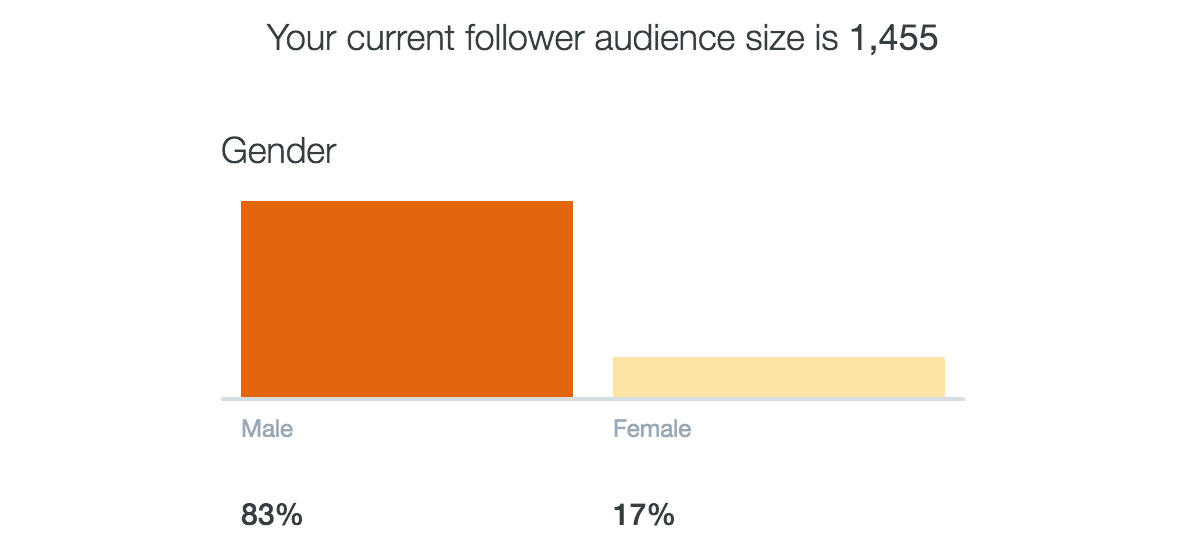How to Analyze Your Twitter Followers by Gender
A. Jesse Jiryu Davis has written a program that breaks down your followers of Twitter by gender and wants to share the results (and why it's important) to you.
Join the DZone community and get the full member experience.
Join For FreeAt least, that's my estimate. Twitter does not ask users their gender, so I have written a program that guesses based on their names. Among those who follow me, the ratio is even worse: 83 percent are men.
The way to fix the first ratio is not mysterious: I should notice and seek more women experts tweeting about my interests, and follow them.
The second ratio, on the other hand, I can merely influence, but I intend to improve it as well. My network on Twitter should represent of the software industry's diverse future, not its unfair present.
How Did I Measure It?
I set out to estimate the gender ratio of the people I follow—my "friends" in Twitter's jargon—and found it surprisingly hard. Twitter analytics readily shows me the converse, an estimate of my followers' gender ratio:

But Twitter doesn't tell me the ratio of my friends. That which is measured improves, so I searched for a service that would measure this number for me, and found FollowerWonk.
FollowerWonk guesses my friends are 71 percent men. Is this a good guess? For the sake of validation, I compare FollowerWonk's estimate of my followers to Twitter's estimate:
| Twitter analytics | ||
| men | women | |
| Followers | 83% | 17% |
| FollowerWonk | ||
| men | women | |
| Followers | 81% | 19% |
| Friends I follow | 72% | 28% |
My followers show up 81 percent male here, close to the Twitter analytics number. So far so good. If FollowerWonk and Twitter agree on the gender ratio of my followers, that suggests FollowerWonk's estimate of the people I follow (which Twitter doesn't analyze) is reasonably good. With it, I can make a habit of measuring my ratio, and improve it.
At $30 a month, however, checking my ratio with FollowerWonk is a pricey habit. I don't need all its features anyhow. Can I solve only the gender-ratio problem economically?
Since FollowerWonk's numbers seem reasonable, I tried to reproduce them. Using Python and some nice Philadelphians' Twitter API wrapper, I began downloading the profiles of all my friends and followers. I immediately found that Twitter's rate limits are miserly, so I randomly sampled only a subset of users instead.
The best gender-correlated information in a Twitter profile is the "name" field: For example, @gvanrossum's name field is "Guido van Rossum," and the first name "Guido" suggests that @gvanrossum is male. I decided to use first names to estimate my ratio.
I wrote a script that passes parts of each name to the SexMachine library to guess gender. SexMachine has predictable downfalls, like mistaking "Brooklyn Zen Center" for a woman named "Brooklyn," but its estimates are as good as FollowerWonk's and Twitter's:
| men | women | undetermined | |
|---|---|---|---|
| Friends I follow | 168 | 66 | 173 |
| 72% | 28% | ||
| Followers | 459 | 108 | 433 |
| 81% | 19% |
(Based on all 407 friends and a sample of 1000 followers.)
Know Your Number
Who is represented in your network on Twitter? Are you speaking and listening to the same unfairly distributed group who have been talking about software for the last few decades, or does your network look like the software industry of the future? Let's know our numbers and improve them.
Opinions expressed by DZone contributors are their own.

Comments